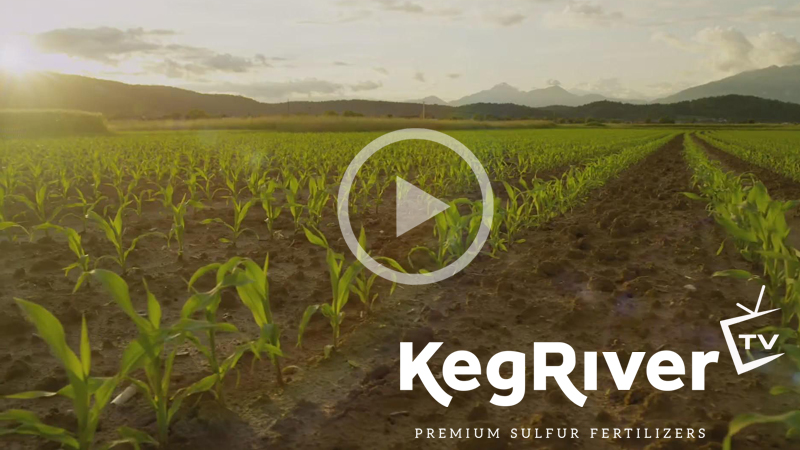Watch: How 4r Agricultural Practices Benefit Farmers

Growing public concern about the environment and food security is putting pressure on the agriculture industry to explain how it’s caring for the land and crops produced on it. Nutrient management plans based on the 4Rs – the right source, the right rate, the right time, and the right place – are gaining popularity among farmers because they successfully address these issues. They also provide lasting producer benefits, to boot.
“Follow the tenets and concepts of 4Rs nutrient stewardship and it will drive you to be more agronomically efficient, more profitable and more environmentally aware of what’s going on in your farming operation,’’ says Ray Dowbenko, an independent agronomist and soil nutrition specialist. (WATCH for full video interview)
Here are some of the main issues to consider in creating a 4Rs nutrient stewardship plan:
The right source
Increasingly, growers are selecting sources that have a reduced environmental impact. Yet other factors may determine which sources make the most sense from an operational perspective.
There are different options for different nutrient sources. Choosing the right source means determining which nutrients will be required and whether they’re needed for immediate or delayed crop uptake. Growers also need to determine which nutrients are already present and available in their soil. This will typically involve soil testing and knowledge of removal/uptake values as it relates to the needs of incoming crops.
Source selection also involves choosing between dry, liquid, or gaseous (i.e. anhydrous ammonia) products. Decisions may be determined by practicalities such as on-farm equipment for application and product storage.
Naturally, farmers will need to consider whether a particular nutrient should be used by itself or in combination with other fertilizers. Factors such as blend characteristics and compatibility will come into play.
The right rate
Selecting the right rate involves assessing the existing soil nutrient supply from all sources, including organic matter, and comparing it to plant demand. Soil testing is a valuable tool for determining what’s already in the soil. It’s important to ask, “Will it still be there after soil testing – and will it be available when the crop needs it?” Then, it’s a case of applying the appropriate amount of nutrients to make up the deficits.
Nutrient levels aren’t consistent across one field, let alone nearby fields. This is where precision application can be used to adjust rates based on a comprehensive soil-testing program. A targeted application is generally more efficient than applying a uniform rate to all areas of a field, whether it needs it or not.
The right place
Consider root-soil dynamics and nutrient movement in planning where to place nutrients. The nutrient source, root type (fibrous or tap-rooted), and crop rooting patterns will all impact how or where it is applied (eg. in the seed row, broadcast, or as a foliar application).
Also, as mentioned earlier, nutrient levels can vary across a field. Again, this is where precision agriculture is changing the way nutrient application is done.
The benefits to business
Dowbenko says following an integrated 4R plan pushes farmers to make their operations more economically viable and, therefore, more profitable. It’s well documented that better crop and soil management results in higher yields. But a 4R program also compels the producer to examine all aspects of their operation and discover and fix operational efficiencies. “It drives you to be more environmentally conscious and aware,’’ he adds.
Farmers who create 4R plans will find support in the business community. Consumers have taken their concerns about soil health and food security to the food processors who, in turn, have taken them back to their suppliers, including farmers.
“So now the food processors have their own programs that dovetail with the fertilizer industry’s nutrient stewardship program and the 4Rs.’’
Dowbenko says no one should feel forced to adopt a 4R plan. However, he’s confident that a little time spent on 4R websites will quickly convince farmers there’s good value in a 4R plan. Meanwhile, those who’ve already adopted a plan and are enjoying its benefits should not be shy about sharing their experience.
“The industry needs to step up and talk about what we’re doing in terms of nutrient management and nutrient stewardship,’’ says Dowbenko. “We need to get our message out to the general consuming public and explain what the 4Rs are and how they’re integrated with social, economic, and environmental issues.’’
There is a wealth of valuable information on the 4Rs available on a number of websites, including these:
– Michigan State University
– The Fertilizer Institute (4RFarming.org)
– Fertilizer Canada
– Cropnutrition.com
Also, check your farm supplier’s websites to learn about their 4R programs.




